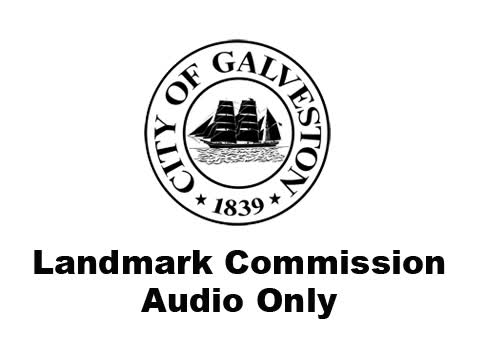Landmark Commission Approves Enclosure of Elevator Openings Despite Staff Concerns
August 04, 2025 | Galveston , Galveston County, Texas
This article was created by AI summarizing key points discussed. AI makes mistakes, so for full details and context, please refer to the video of the full meeting. Please report any errors so we can fix them. Report an error »

The Galveston Landmark Commission convened on August 4, 2025, to discuss significant alterations to a historic building, focusing on the enclosure of existing elevator door openings. The commission received 66 public notices regarding the proposed changes, with 19 responses, all in favor of the project.
The primary request involved enclosing exposed elevator doors with concrete masonry units (CMU) and a stucco veneer. The applicant indicated that the stucco would be inset about two inches from the historic brick facade. However, staff raised concerns about the proposal's compliance with design standards, noting that the materials used should be compatible with the surrounding context, which predominantly features brick, stone, and stucco.
Staff emphasized that while the proposed work is on a less visible secondary wall, the changes would still be noticeable from the pedestrian realm due to the abrupt material transitions. They also highlighted potential issues with the interaction between the historic brick and modern CMU, referencing past cases where similar issues arose. Staff recommended denying the request due to non-conformance with design standards but suggested that if the commission found the proposal acceptable, specific conditions could be applied.
During the public hearing, the applicant defended the need for the enclosure, citing the deteriorating condition of the existing elevator doors and referencing guidelines from the National Park Service that support infilling historic openings. The applicant argued that maintaining the elevator shaft openings could provide historical context rather than reverting to a blank wall.
Contractor John McNatt also spoke, expressing logistical concerns about maintaining the structure if the doors were left intact, as they would hinder access for necessary equipment in the future.
The commission's discussions highlighted the balance between preserving historical integrity and addressing practical maintenance needs, setting the stage for further deliberation on the proposal's fate.
The primary request involved enclosing exposed elevator doors with concrete masonry units (CMU) and a stucco veneer. The applicant indicated that the stucco would be inset about two inches from the historic brick facade. However, staff raised concerns about the proposal's compliance with design standards, noting that the materials used should be compatible with the surrounding context, which predominantly features brick, stone, and stucco.
Staff emphasized that while the proposed work is on a less visible secondary wall, the changes would still be noticeable from the pedestrian realm due to the abrupt material transitions. They also highlighted potential issues with the interaction between the historic brick and modern CMU, referencing past cases where similar issues arose. Staff recommended denying the request due to non-conformance with design standards but suggested that if the commission found the proposal acceptable, specific conditions could be applied.
During the public hearing, the applicant defended the need for the enclosure, citing the deteriorating condition of the existing elevator doors and referencing guidelines from the National Park Service that support infilling historic openings. The applicant argued that maintaining the elevator shaft openings could provide historical context rather than reverting to a blank wall.
Contractor John McNatt also spoke, expressing logistical concerns about maintaining the structure if the doors were left intact, as they would hinder access for necessary equipment in the future.
The commission's discussions highlighted the balance between preserving historical integrity and addressing practical maintenance needs, setting the stage for further deliberation on the proposal's fate.
View full meeting
This article is based on a recent meeting—watch the full video and explore the complete transcript for deeper insights into the discussion.
View full meeting
